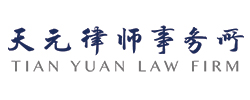Although not monopolistic in the strictest sense, acquisition of startups or emerging players may likewise attract the wrong sort of attention from regulators
So-called “killer acquisitions” – M&A deals that do not meet filing thresholds but do or may exclude or restrict competition – continue to attract the attention of antitrust authorities.
US antitrust authorities are keeping a close eye on technology giants and pharmaceutical companies, bringing lawsuits to challenge transactions. The high-profile acquisition of Grail by Illumina was banned by European antitrust authorities, with Illumina penalised for violating standstill obligations.
In China, enforcement has been further strengthened since the Anti-Monopoly Law and its supporting provisions entered into force. Earlier this year, antitrust authorities approved Simcere Pharmaceutical’s merger concentration filing of for acquisition of Tobishi, the first “below the threshold” concentration cleared with conditions.
In this article, the author outlines potential antitrust risks in killer acquisitions, and shares some alleviating tips.
Laws and regulations

Managing Partner
Tian Yuan Law Firm
Tel: +86 135 0107 6376
E-mail: hwei@tylaw.com.cn
China’s anti-monopoly rules on killer acquisitions were first reflected in the State Council’s Provisions on the Thresholds for the Filing of Concentrations of Undertakings in 2008. The 2022 amendments to the Anti-Monopoly Law incorporated this issue, clearly providing that antitrust authorities “may require undertakings to make filings”, with failure to file investigated according to law. The Provisions on Review of Concentrations of Undertakings, effective since 15 April 2023, further clarify that a transaction party required to make a filing is also subject to standstill obligations, and breaching this will cause high antitrust risks.
The new rules impose higher antitrust risk assessment requirements on concentrated transactions that do not meet the filing thresholds, and may also create more transaction risks and uncertainties.
High-risk transactions
Anti-monopoly enforcement in China, the EU and the US shows that M&A in IP-intensive industries such as high-tech and pharma are often most likely to attract concerns related to killer acquisitions. Therefore, with transactions in these industries, it is advisable to conduct thorough antitrust risk assessments in advance.
Be alert to whether the transaction will trigger substantial changes in the market structure. China has not yet issued guidelines setting the “red line”, but EU and US guidelines are a useful reference.
Horizontal mergers. EU guidelines on assessment of horizontal mergers focus on where the combined share of the post-concentration entities exceeds 25%; or where relevant post-concentration market has a Herfindahl-Hirschman Index (HHI) between 1,000 and 2,000, with an incremental HHI greater than 250; or where relevant post-concentration market has an HHI greater than 2,000, with an incremental HHI greater than 150.
The 2023 Draft Merger Guidelines of the US focus on where relevant post-concentration market has an HHI greater than 1,800, with an incremental HHI greater than 100; or where the combined market share of post-concentration entities exceeds 30%, with the incremental HHI greater than 100.

Partner
Tian Yuan Law Firm
Tel: +86 136 9359 1801
E-mail: gaochang@tylaw.com.cn
Non-horizontal mergers. EU guidelines on the assessment of non-horizontal mergers focus on where parties have more than 30% of relevant market share in their respective markets, and where the post-concentration HHI is greater than 2,000, which may give rise to concerns over foreclosure effect or tie-in sale.
US guidelines focus on “the percentage of competitors that are foreclosed from obtaining relevant products under competitive terms”. Vigilance may be required if the percentage of foreclosure reaches 50% or greater. Additionally, if a transaction has one of the following characteristics, it may be considered to appear a killer acquisition and attract antitrust attention.
- When one of the parties is an important new or potential entrant that has demonstrated “significant innovation or advancement”, “rapid responsiveness to the market”, and “significant potential to threaten market leadership”, an M&A deal with a market leading party is likely to raise concerns about the purpose of the transaction, and if it will adversely affect the market entry, R&D and innovation.
- When vertically integrated transactions involving a company controlling an important raw material relevant to market competition may limit choices in raw material supply, and thus deprive competitors of fair opportunities.
- In complementary transactions, when the market power of a party in one market may extend to another through tie-in sale and other means, and crowd out competitors in other markets.
Initial recommendations
When engaging in transactions that fall below filing thresholds, careful assessment of antitrust risks becomes crucial. Enterprises planning such transactions can consider these recommendations.
Assess the likelihood of a transaction raising antitrust concerns based on the industry involved, changes in market structure, and whether any characteristics are comparable with killer acquisition. If a transaction has already drawn attention, or been required to file by overseas antitrust authorities, the likelihood of antitrust scrutiny in China is also high. This should be taken into full consideration in negotiating terms of the transaction, such as closing arrangement and break-up fees.
Assess the likelihood of being required to make a merger filing based on factors including whether the transaction attracts attention in the industry, or involves a sensitive sector. Pay special attention to stakeholders such as competitors, suppliers, customers and factors linking the transaction to the Chinese market, such as whether the downstream industry primarily serves Chinese customers. Anticipate the actions, timelines and potential demands of stakeholders, and seek solutions.
If the transaction has not been implemented, while attracting attention or required to make a filing, the parties should: plan on how to better interact with antitrust authorities; collect evidence supporting the argument that the transaction will not exclude or restrict competition; refrain from gun-jumping behaviour; and consider striving for a more favourable outcome by adjusting the transaction structure, or proposing a remedy.
If the transaction has already been implemented, in addition to actively co-operating with antitrust agencies for review of the concentration, negotiate potential measures to temporarily suspend the deal, minimising adverse impact on market competition while mitigating losses for the parties.

China Pacific Insurance Plaza
28 Fengsheng Hutong
Beijing 100032, China
Tel: +86 10 5776 3888
Fax: +86 10 5776 3777
www.tylaw.com.cn





















